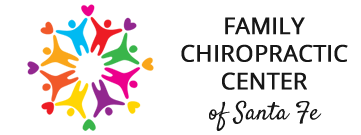Excellent Advice For Sore Muscles After Working Out
Quick Fixes for Sore Muscles
A vigorous fitness routine sometimes comes at a price: muscle soreness. Try these pre- and post-workout muscle treatments to ease the pain and speed recovery following a tough workout.
There’s nothing like the sense of satisfaction (and the sensation of all those endorphins) after a tough workout. But as you trudge home from the gym, you know something else is probably coming, too — muscle soreness. “Fitness-related muscle soreness is so common it has a name, delayed-onset muscle soreness or DOMS,” says Samantha Clayton, ACE- and AFAA-certified personal trainer, Olympic sprinter, and women’s sprints coach at Pepperdine University in Malibu, Calif. “DOMS sets in a day or two following a strenuous fitness routine and is caused by microscopic tears within the muscle tissue created during your intense exercise activity.” This bittersweet reminder of how hard you pushed yourself actually serves a biological purpose during the workout recovery period. “Your body responds with pain so you don’t over-train while it heals itself,” Clayton explains.
If you have drastically changed your workout routine or amped up the volume or intensity of your fitness regimen, DOMS can’t be avoided, but there are some simple treatments that can help lessen the blow and help you feel better, faster. Try these tips to bounce back with ease.
Sore Muscle Treatments: During Your Workout
The best way to prevent soreness and injury is prevention, so add these elements to your game plan:
Stretch it out. “Before your workout, an extended warm-up and stretch routine will fully prepare your body for exercise and reduce the effects of DOMS,” Clayton says. “Take the time to perform gentle dynamic stretches [stretches that involve movement] before your fitness routine and follow up with static stretches [stretches you hold],” she says. Swinging your legs and gentle walking lunges are two examples of dynamic stretches.
Warm up before weight training. “I see so many people jumping straight to the weight rack when they get to the gym, but loading your muscles without adequate preparation not only increases your chances of getting severe DOMS, it also puts you at risk for a pulling a tendon, ligament, or muscle during your workout,” Clayton says. Doing the cardio portion first really warms up your muscles. If you’re doing a weights-only workout, add a heart-pumping element to your warm up, such as jumping jacks or jump rope, to prepare your muscles for hard work.
Hydrate. “Hydration is important before and throughout your workout to prevent cramping and decrease inflammation (and muscle soreness) after exercise,” says Sara Edwards, MD, an orthopedic surgeon and sports medicine physician at Northwestern Memorial Hospital and an assistant professor of orthopedic surgery at Northwestern’s Feinberg School of Medicine in Chicago. And despite what beverage companies want you to believe, water is the best choice for most exercisers. If your fitness routine leads to excessive sweating, either because you are exercising in hot weather or working out vigorously, you might want to also replace electrolytes and sodium by drinking a sports beverage in addition to hydrating with water, adds Dr. Edwards. Just keep it low-calorie to avoid drinking back all the calories you just burned.
Work out with correct form. “Being aware of your posture during your workout can prevent unnecessary DOMS,” Clayton says. “Select your weights based on your form first because you will benefit more and experience less soreness by lifting 50 pounds correctly than by lifting 100 pounds incorrectly.”
Sore Muscle Treatments: Immediately After Your Workout
Resist the urge to collapse in the nearest chair. Instead, to help muscle recovery:
Jump in an ice bath. “Almost every college and pro sports team locker room has an ice bath, and athletes are strongly encouraged to jump in after a tough workout for a 10- minute soak,” Clayton says. Clayton encourages amateur athletes to do the same because cold baths have been found to significantly reduce muscle soreness — particularly when compared to resting or no intervention after a workout, researchers at University of Ulster in Northern Ireland concluded after reviewing the results of 17 clinical trials.
Heat up later in the day. A few hours after an intense fitness session, apply a heating pad or other heat source. “Muscle tightness is a cause of increased pain for many people, and stimulating the blood flow and loosening up sore muscles with heat can help speed up the healing process,” Clayton says.
Reach for pineapple or tart cherries. “Bromelain, an enzyme found in pineapples, has anti-inflammatory benefits comparable to those of anti-inflammatory medications,” Clayton says. Recent research has also unveiled the hidden anti-inflammatory powers of tart cherries or tart cherry juice, which has also been shown to significantly reduce inflammation in the body. You can also purchase supplements containing bromelain at a health food store or online.
Sore Muscle Treatments: The Day After
Use your sore muscles. “The day after your workout, use the same muscles in a non-resistant way to avoid soreness,” says Michael Terry, MD, an orthopedic surgeon and sports medicine physician at Northwestern Memorial Hospital, associate professor at the Feinberg School of Medicine, and team physician for Northwestern University athletics in Chicago. “For example, if you have slightly sore muscles from skiing, take a bike ride the following day.”
Ice during recovery. Though an ice bath may help stave off muscle soreness immediately after a workout, applying ice topically will help ease the soreness that sets in the next day. “Icing decreases inflammation in sore muscles,” Edwards says. “We used to think muscle soreness following a workout was due to a buildup of lactic acid, but now it’s thought to result from inflammation — ice helps reduce this inflammation,” she says.
Indulge in some self-massage. “Massage is a great treatment for sore muscles,” Clayton says. She adds that if your muscles are really sore after a tough workout, the thought of someone touching them may make you scream. “If this is the case, self-massage may be a better sore muscle treatment, so you can control the pressure,” she says. For this, she suggests a massage stick or a foam roller — “these techniques will relax sore muscles and stretch them to relieve tension.”
What helps your muscles bounce back after a tough workout? Tell us in the comments.
FAMILY CHIROPRACTIC CENTER OF SANTA FE
Learn more about our practice and what we can do for you.
Family Chiropractic Center of Santa Fe is committed to your good health and well-being.
Family Chiropractic Center of Santa Fe is a family practice, providing safe and effective treatment for everyone from newborns to centenarians.
Read their testimonials.







